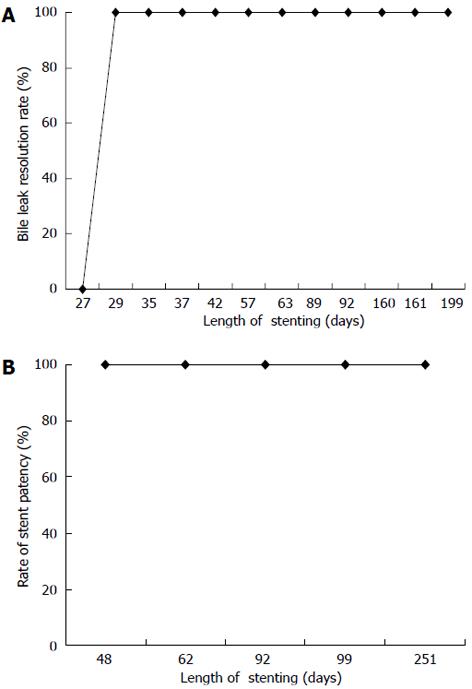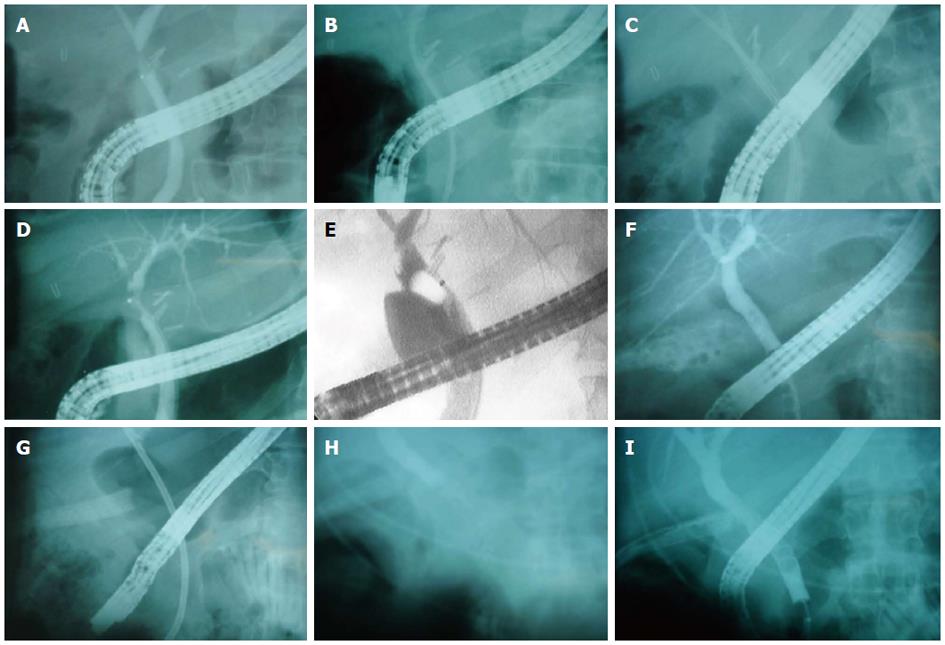Copyright
©2013 Baishideng Publishing Group Co.
World J Gastrointest Endosc. Jul 16, 2013; 5(7): 332-339
Published online Jul 16, 2013. doi: 10.4253/wjge.v5.i7.332
Published online Jul 16, 2013. doi: 10.4253/wjge.v5.i7.332
Figure 1 Stent patency rate (%) in patients with benign biliary strictures after insertion of fully covered self-expanding metal stents plotted against stent duration (d).
A: Stent patency rate (%) in 12 patients with benign biliary strictures after insertion of fully covered self-expanding metal stents plotted against stent duration; B: Bile leak resolution rate (%) in 5 patients with bile leaks after insertion of fully covered self-expanding metal stents plotted against stent duration (d).
Figure 2 Stent placement for benign biliary strictures and bile leaks.
A: A Left intrahepatic duct stricture after cholecystectomy and repair; B: Placement of biliary plastic stent for intrahepatic duct stricture; C: Placement of 2 plastic stents for persistent intrahepatic duct stricture; D: Persistent intrahepatic stricture after placement of 2 plastic biliary stents every 3 mo for 2 years. This stricture did not resolve therefore plastic stents were extracted and a Viabil fully covered metal stent was later placed; E: Intrahepatic stricture resolution following Viabil stent removal after 5 mo; F: Bile leak in a patient with a cystic stump and gangrenous gallbladder; G: Placement of plastic biliary stent in patient with bile leak; H: Placement of viabil stent since bile leak did not resolve with plastic stents; I: Resolution of bile leak following Viabil stent removal after 1 mo.
- Citation: Lalezari D, Singh I, Reicher S, Eysselein VE. Evaluation of fully covered self-expanding metal stents in benign biliary strictures and bile leaks. World J Gastrointest Endosc 2013; 5(7): 332-339
- URL: https://www.wjgnet.com/1948-5190/full/v5/i7/332.htm
- DOI: https://dx.doi.org/10.4253/wjge.v5.i7.332










